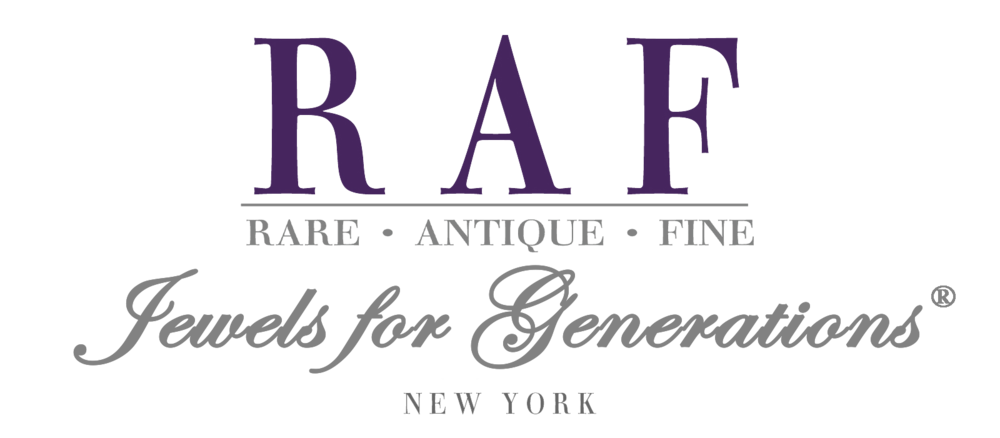OSCAR HEYMAN JEWELRY
Oscar Heyman was a renowned jewelry designer and manufacturer based in New York City. The company was founded in 1912 by Oscar and his brother Nathan, who had emigrated from Russia.
Heyman jewelry was known for its exceptional craftsmanship and attention to detail, with all of their pieces being handmade by master artisans. They specialized in creating high-end, one-of-a-kind jewelry pieces using the finest gemstones, often working with clients to create custom pieces tailored to their specific preferences.
Throughout its history, Oscar Heyman has worked with a number of notable clients and brands, including Tiffany & Co., Cartier, and Van Cleef & Arpels. In the 1920s and 1930s, they became a supplier to many of the major jewelry houses, creating pieces that were sold under their clients' brand names.
Heyman's famous works include a necklace made for Jacqueline Kennedy Onassis, which featured a 47.5-carat yellow diamond, and a bracelet for Elizabeth Taylor that incorporated a rare Burmese sapphire. Other notable clients have included the Duchess of Windsor and the Maharaja of Indore.
Today, Oscar Heyman is still a family-owned and operated business, with third- and fourth-generation family members continuing the tradition of creating exceptional, handcrafted jewelry. Their pieces are highly sought after by collectors and jewelry enthusiasts around the world.
History of Oscar Heyman :
Three brothers, Oscar, Nathan, and Harry Heyman, who migrated from Latvia in 1906, founded Oscar Heyman & Brothers in New York in 1912. Oscar and Nathan, who were the eldest among nine siblings, had already spent five years as apprentices at their great-uncle's jewelry manufacturing workshop in Kharkov. It is believed that the workshop's clientele included Carl Fabergé, the imperial jeweler. During their apprenticeship, they acquired various skills, such as design, production, metalsmithing techniques (with a focus on platinum), stone setting, and tool making, which would greatly contribute to their future success.
After settling in New York, Nathan secured a job as a tool maker at a large company, while Oscar landed a position as a bench worker at a small jewelry manufacturer. When Cartier established a branch in the city in 1909, Oscar was hired as the first non-French jeweler to work for the prestigious firm. This marked the beginning of a long-lasting association between Oscar Heyman and Cartier that would span decades. Three years later, the Heyman brothers decided to venture out on their own, and they placed an advertisement in the October 1912 issue of the Jeweler's Circular trade magazine announcing the opening of "Oscar Heyman & Bros. Inc." at 49 Maiden Lane in the heart of the city's jewelry district.
Soon, Louis, William, and George, as well as their sisters Lena and Frances, joined them, taking care of the administrative aspects of their rapidly expanding business. With their diverse range of skills and expertise in working with platinum, they quickly became popular manufacturers for numerous large retailers during that period. Renowned names like Cartier, Tiffany, Black Star & Frost, J.E.Caldwell, and Marcus & Co. were just a few of their many esteemed clients, earning them the title of "the jeweler's jeweler." They were content to remain in the background and produce exquisite jewels anonymously for their prestigious customers.
Heyman's reputation was not only built on their exceptional skill in craftsmanship, but also their penchant for using a diverse and captivating assortment of gemstones. Even in their early years, they stood out by incorporating pastel-toned sapphires, cat's eye chrysoberyls, and moonstones, in addition to the more traditional rubies, blue sapphires, and emeralds. Moreover, their technical prowess was notable as evidenced by the seven exclusive patents they earned between 1916 and 1942 for their innovative approaches to jewelry design and manufacturing techniques.
The House of Jewels made a splash at the 1939 New York World's Fair, featuring the latest jewelry creations from five of America's top jewelry houses. Interestingly, only one of these houses did not exhibit jewels made by Oscar Heyman's workshop. Little did the millions of fair visitors know that they were admiring the skill of a jeweler who was virtually unknown outside of the industry. Marcus & Co. showcased a collection of Heyman jewels at the fair, which included suites adorned with moonstones and Siberian amethysts, as well as five stunning floral pieces, such as an orchid, lily-of-the-valley, and pansy, for which they were awarded first prize. The pansy design became synonymous with Oscar Heyman and was produced continuously since the 1930s in various gemstones, not only for their clients, but also under their own name in later years.
During the same period, Van Cleef & Arpels established their inaugural store in New York City, and Oscar Heyman was chosen for producing their jewelry in America. Oscar Heyman was commissioned to craft the renowned 'Serti Mystérieux' pieces for VCA NY, which was a highly intricate and labor-intensive design that required exceptional expertise. The partnership between the two companies was enduring, and Oscar Heyman's workshop produced almost all of VCA's mystery-set jewelry made in the United States until the late 1900s.
Back in 1969, Cartier presented the firm with a daunting task: Elizabeth Taylor wanted her recently acquired 69.42ct pear-shaped diamond, gifted to her by Richard Burton, to be transformed from a cumbersome ring to an awe-inspiring necklace, and she needed it done within a week. The Heyman craftsmen rose to the challenge, sketching out ideas and approving a design in just a few hours, then working tirelessly for six days straight to find over 60 pear-shaped diamonds that perfectly matched and graduated in size to create the necklace. It was an exhilarating commission and one of the most exciting projects the workshop had received that year, says Adam Heyman, who now runs the firm alongside his family.
Today, the Heymans continue the legacy of their family business, which has been operating for over 100 years and is highly sought after for its vintage jewelry. Their exquisite craftsmanship, exceptional gems, and timeless designs have ensured their success, keeping the flag of founders high.

